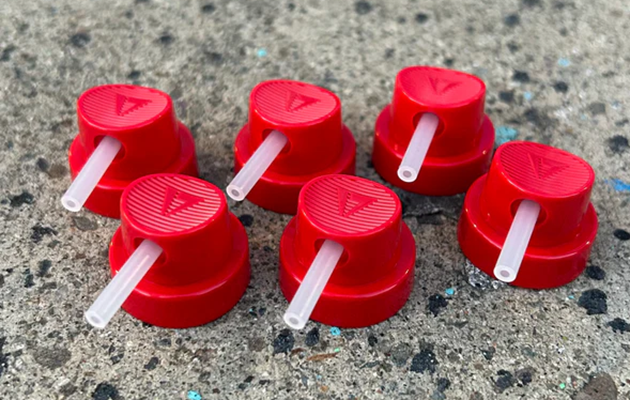Spray Painting 101: A Comprehensive Guide to Maintaining Your Cans
Spray painting is perhaps one of the most versatile and widely used methods for applying paint. Street artists use them to create stunning murals, DIY enthusiasts use them to jazz up furniture, and automotive professionals use them for refinishing cars. Their versatile nature, along with the wide array of colours and finishes available, deliver vibrant and consistent results.
However, like all tools and materials, spray paint cans require proper care and maintenance to ensure optimal performance. Sometimes, even the smallest of details can make all the difference in achieving a flawless finish. You don’t have to go through complicated procedures to maintain your them either – there are a few simple steps that can save you some headaches in the long run.
How to Take Care of Spray Paint Cans?
Depending on the type and brand of paint you use, there may be some specific instructions for storage and maintenance. Sometimes, these instructions are printed on the label but if you can’t find them, you should adhere to several general principles to maintain them.
Get Appropriate Caps

As the main point of contact between the can and the environment, having a precise and easy-to-use spray nozzle can turn the paint application process into a much more straightforward affair. Some cans may already have caps that are suited to your needs, but for others, you may need to buy them separately.
The first thing you need to look into is the compatibility of the cap with your specific paint can. The size and shape of the can’s valve are crucial in determining which cap will fit. For instance, a small cap may not work well with a larger valve as it will restrict the flow of paint, leading to overspray and uneven coverage. Similarly, a bigger one may not provide the necessary precision for intricate designs.
Next, consider the type of spray pattern you prefer. Different spray caps produce different patterns, such as fan or cone-shaped sprays. The former produces a wide coverage area, while the latter is more suitable for finer details. So if you do a lot of detail work, you may not find a fan spray cap to be particularly useful.
Additionally, think about the level of control you need over the paint flow. Some caps allow for adjustable pressure and flow settings, while others have a fixed output. Customisable models provide greater flexibility and are ideal for achieving the desired finish. On the other hand, fixed output ones have a more consistent spray pattern but may not be suitable for all painting techniques.
Finally, remember to clean your spray nozzle regularly to avoid clogging and maintain its performance. This is especially important if you use different types of paint as residue can build up and affect the spray pattern. A simple rinse with water after each use or a thorough cleaning with a special solvent will keep your cap in top condition.
Shake Thoroughly Before Use
Opening a brand-new can isn’t the only time you should shake your spray paint. It’s important to shake the can thoroughly before each use, even if it hasn’t been sitting for a long time. This helps ensure that the paint is well-mixed and will provide an even application.
If you don’t shake the can enough, you may end up with inconsistent coverage and clumps of paint in your spray. This can ruin your project and require you to start all over again. So be sure to give the can a good shake for at least a minute and avoid the frustration of a poorly applied coat of paint.
Optimise Your Spraying Technique
How you hold and move the can while spraying also plays a significant role in achieving a smooth and even finish. You should keep it upright and spray in short, controlled bursts rather than holding down the nozzle continuously.
This helps to prevent drips and runs as well as ensuring an even distribution of paint. Additionally, make sure to maintain a consistent distance from the surface you are painting. Too close and you may end up with puddles of paint, while too far will result in light coverage and potential overspray.
It may take some practice to find the right technique for you, but once mastered, it will make a noticeable difference in the outcome of your project. Not only will you get better results, but you will also save time and paint in the long run.
Consider Environmental Factors

While spray painting may seem like a simple task, certain environmental factors can affect your end result. For example, weather conditions such as temperature and humidity can impact how quickly the paint dries and how well it adheres to the surface.
If you are painting outdoors, it’s best to choose a day with moderate temperatures and low humidity. Avoid painting in direct sunlight as this can cause the paint to dry too quickly and potentially lead to cracking or peeling.
Indoor painting can also be affected by environmental factors such as air flow and ventilation. You should keep the room well-ventilated to prevent a buildup of fumes and ensure proper drying of the paint.
Pay Attention to Storage
Once you finish your painting project, it’s important to properly store your spray paint for future use. Keep the cans in a cool, dry place and avoid exposing them to extreme temperatures or direct sunlight.
Make sure the caps are secured tightly to prevent the paint from drying out or leaking. If you have leftover paint, consider transferring it to a smaller container to reduce air exposure and prolong its shelf life.
Additionally, be sure to properly dispose of any empty spray paint cans according to local regulations. Many municipalities have specific guidelines for the disposal of hazardous materials, ranging from designated drop-off locations to curbside pickup services.